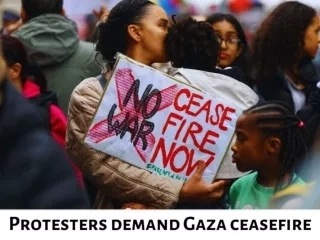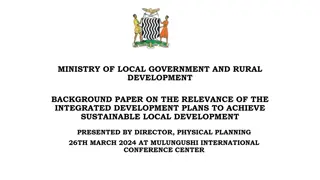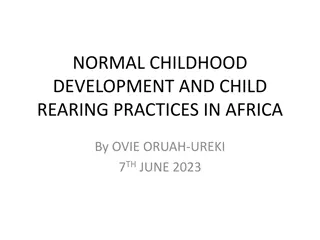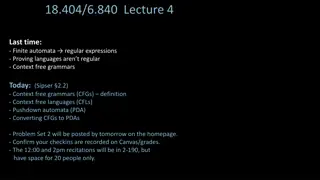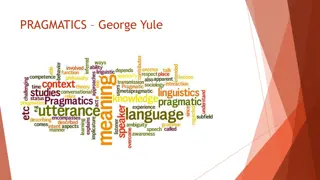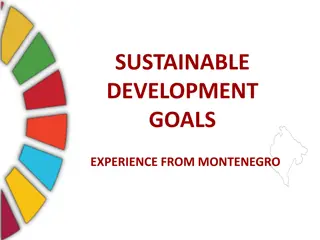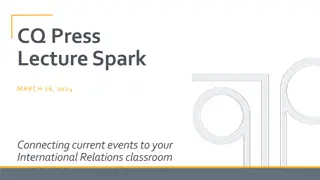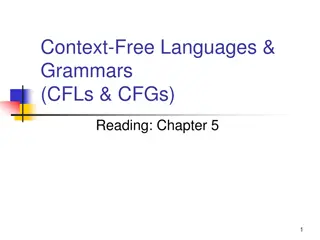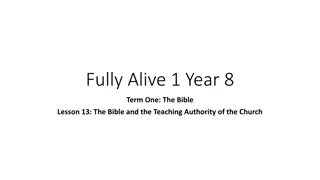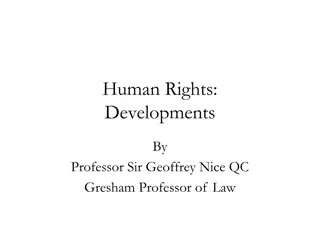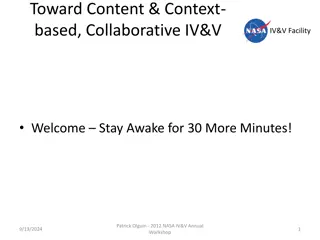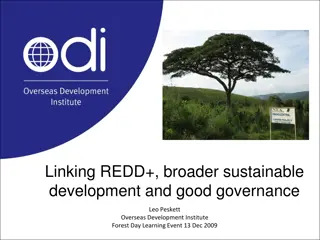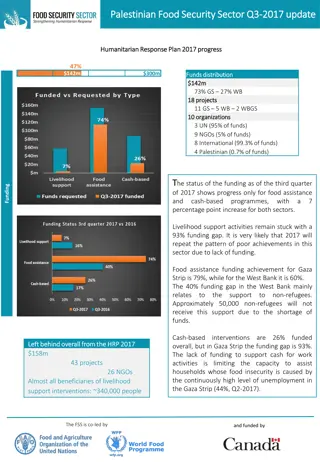
Introduction and Context – Challenges to Development in Gaza
Sincetthet2014thostilities,tconditionstintthetGazatStriptaretlookingtincreasinglytgrim.tnUndertantIsraeli-imposedt ten-yeartblockade,taccesst totkeyt resourcesthastalsotbeentnstifled,t witht disastroust humanitariant andt economict consequences.t
Download Presentation

Please find below an Image/Link to download the presentation.
The content on the website is provided AS IS for your information and personal use only. It may not be sold, licensed, or shared on other websites without obtaining consent from the author. If you encounter any issues during the download, it is possible that the publisher has removed the file from their server.
You are allowed to download the files provided on this website for personal or commercial use, subject to the condition that they are used lawfully. All files are the property of their respective owners.
The content on the website is provided AS IS for your information and personal use only. It may not be sold, licensed, or shared on other websites without obtaining consent from the author.
E N D
Presentation Transcript
#ResilientPalestine Building Resilience in Gaza: Challenges and Opportunities Introduction and Context Challenges to Development in Gaza Since the 2014 hostilities, conditions in the Gaza Strip are looking increasingly grim. Under an Israeli-imposed ten-year blockade, access to key resources has also been stifled, with disastrous humanitarian and economic consequences. Therefore, conditions in the Gaza Strip limit development and economic opportunity for the local population. In addition, the 2014 hostilities caused vast damage to public and private infrastructure including schools, hospitals, water and power plants, industrial infrastructure and agricultural land. Further, the internal Palestinian political divide, and the prolonged closure of the Rafah Border Crossing continue to hamper economic and social development. Against this backdrop, the implementation of donor-funded programmes has been slow and ad hoc, and reconstruction efforts have failed to bring about much needed change on the ground. At the political level, the Palestinian internal division continues to create barriers to progress, leading to further challenges in the governance of the Gaza Strip. 1
#ResilientPalestine At the socio-economic level, conditions are dire. Poverty and food insecurity are increasing, as is a reliance on foreign aid.1 Unemployment continues to increase amongst youth and adults; it is estimated that at least 58% of the population does not have a regular source of income. While, donors and civil society actors continue to highlight the plight of the Gaza population, funding shortages and lack of viable political solutions has caused fatigue among the international community, especially concerning the Gaza Strip. This has resulted in the serious neglect of key projects including the reconstruction of necessary infrastructure like water, waste and power facilities. Likewise, programmes to improve governance, access to basic services, and psychosocial support have also been undermined by shrinking international interest and funding. The Gaza reconstruction is proceeding slower than expected.2 Major donors have failed to deliver on their pledges made at the October 2014 Cairo Conference for Reconstructing Gaza, and Israel continues to restrict the entry of the much-needed construction materials along with its application of the dual-use items system. As of 31 July 2016, the latest update from the World Bank indicates that only 46% (USD 1.596 billion) of the USD 3.5 billion pledges earmarked for Gaza reconstruction has 1 By the end of 2014, poverty rate in Gaza reached 39%, with over 80% of Gaza s population became aid- dependent; approximately half of them rendered food insecure. See, UNRWA, Gaza Situation Report 93 (May 22, 2015). 2 United Nations, Gaza: Two Years After, United Nations Country Team in the State of Palestine (August 26, 2016), p. 4. 2
#ResilientPalestine been disbursed.3 Of the disbursed funds, only USD 612 million, or 16% of the estimated USD 3.875 billion recovery needs, were allocated to priority areas identified by the Palestinian government s Detailed Needs Assessment (DNA) and Recovery Framework for Gaza Reconstruction in the five sectors affected by the war.4 The productive sector share from the disbursed funds, at USD 16 million, is a meagre 3% of the USD 602 million estimated by DNA for the recovery needs of that sector. Over 65,000 people continue to be internally displaced.5 The local private sector is yet to recover from the losses sustained from the 2014 hostilities, which caused extensive and widespread damage to productive assets, already weakened by the crippling ten-year long blockade. Continuing severe restrictions on imports and exports have driven many out of business, forced others to relocate to neighbouring Arab countries, or left those who remain working well below production capacity. Gaza s private sector is isolated from the rest of the State of Palestine and from international markets, seriously reducing its productive capacity. The Gaza Strip remains a site of man-made natural disaster, isolated and besieged and facing a crippling humanitarian crisis. The current situation has resulted in mass poverty and unemployment, deterioration and breakdown of civil and political institutions, food insecurity, decline in local environment, and reduced access to the 3 World Bank update, Reconstructing Gaza - Donor Pledges (August 29, 2016) 4 State of Palestine, Detailed Needs Assessment (DNA) and Recovery Framework for Gaza Reconstruction (August 2015). 5 United Nations, Gaza: Two Years After (August 26, 2016), p. 4. 3
#ResilientPalestine most basic rights and services. Conditions are so grave that, as the UN reported in 20126 and again in 2015,7 the entire Gaza Strip could be unlivable by the year 2020, only four years from now. Under these extremely harsh conditions, economic recovery in the Gaza Strip remains a distant goal, and any potential gains are likely to be short-lived, driven by donor funding not private investment, and easily reversed by a new round of adverse shocks. Long-term development under current conditions is not attainable. Therefore, the situation begs a more practical, long-term, and pragmatic approach to drastically improve the living conditions of the Gaza Strip and its population. To this end, it is important to utilize the emerging tools of resilience and resilience building in order to transform the Gaza Strip s future prospects. The Overseas Development Institute (ODI) suggests that the potential efficacy of resilience is linked with four key elements (i) Exposure, (ii) Vulnerability (iii) Adapting (iv) and Recovery.8 These four elements are important in establishing the various aspects of resilience and how it impacts individuals, communities, institutions, and systems. However, in the case of the Gaza Strip where the situation continues to stagnate or deteriorate, the fifth and final element, transformation, stands as most critical to develop future, successful strategies. To this end, it is important to establish that recovery and transformation need not necessarily mean simply a returning to the previous level of welfare , but instead becoming truly empowered. Becoming resilient will not only help to reduce the vulnerability of individuals, communities, and systems, but will instead take a step further in proactively empowering those who are now resilient to move beyond mere coping and adapting, to transforming. In the case of Gaza, this is no doubt a daunting challenge. The success of the resilience framework lies in its potential to address the root causes of vulnerability. By doing so, resilient people, communities, systems, and institutions are better able to respond to the on-going shocks and the risks facing them. In the case of the Gaza Strip, the root causes of vulnerability are outlined above: blockade and siege, on-going hostilities with Israel, and internal political division. Therefore, strategies and policies must be designed to address the core problems facing the Gaza Strip, and a second set of policies and approaches that can help build resilience at the community level, while political solutions continue to remain elusive. 6 United Nations, Gaza in 2020: A Liveable Place? (August 2012). 7 UNCTAD, Developments in the economy of the Occupied Palestinian Territory, Report on assistance to the Palestinian people (6 July 2015). 8 ODI, Supporting Resilience in Difficult Places: A critical look at applying the resilience concept in countries where crises are the norm, 3 4
#ResilientPalestine Building Resilience to Tackle Core Issues Blockade and Siege The blockade and siege of the Gaza Strip are the core factors in the Strip s poor development prospects, which continues to disempower and disenfranchise the local population. While the blockade continues, Gaza s tunnel economy provided a lifeline to businesses for imports and exports. Thus at a policy level, clear and lasting mediation between the State of Palestine, Israel and the international community is the only way to reduce and eventually completely lift the blockade to allow businesses to resume the formalised movement of goods and services. This is a critical step in improving the most basic living conditions in the Gaza Strip. The clear illegality of the blockade gives international actors a strong position from which to pressure Israel to end it. Nevertheless, this requires willing partners that can make the legal, political and humanitarian case to lift the restrictions that impede the basic livelihoods of the Gaza population. To support such an undertaking at a practical level, building the capacity of local actors, systems and institutions that can reflect and represent the Gaza Strip in future mediations, legal action and deliberations is necessary. It is important to develop the Gaza Strip s capacity for advocacy and diplomacy to enable effective advocacy, to connect the Strip with international partners and strengthen cooperation. Further, systems and institutions need to be prepared for a post- blockade era to support the secure and transparent flow of goods and people through effective technical institutions. The Internal Split Ongoing political division between Hamas and Fatah continues to be detrimental to the Gaza Strip s security and development. While Israel has succeeded in separating the territory geographically, the political disagreement between Hamas and the Palestinian Government has eroded the chance of a viable and lasting political solution with Israel. The fact that Hamas is labelled a terrorist organization among international governments has led to political isolation of the Gaza Strip on the international stage. Internal dispute has severely impacted the Gaza society, the economy, and governance. The separation between the government in Ramallah and the Gaza Strip has led to an increasing disconnect between Palestinians themselves on various levels. At a policy level, it is crucial that both parties, and international partners, work towards building a lasting agreement that supports political unity, which will benefit the governance of basic services and streamline legal and diplomatic incoherence. 5
#ResilientPalestine At a practical level, it is important to engage civil society in both the West Bank and the Gaza Strip to prepare for an unforeseen political future, including supporting the capacity of young people and women to partake in the political process. Resilience- building activities include identifying leaders, focusing on women and youth, to work within their communities to address their key concerns and pose solutions to their identified challenges. Further, improving access to justice, the rule of law, fair and free elections, the transparency and accountability of the private sector, and public institutions on all levels will serve to increase Palestinian trust in the institutions of government and society, improving social cohesion and boosting morale. Conflict with Israel Given the deadlock in the peace process, and fatigue after Oslo, there is little faith among Palestinians in the peace process. In particular, young Palestinians are increasingly disillusioned with older political leadership. This offers a new generation an opportunity to represent their interests in building a lasting agreement with Israel to improve their living conditions and economic opportunity. It is clear that neither the occupation, nor the siege will be lifted by Israel voluntarily and therefore left Palestinians with a few options. It is clear that political violence and civil unrest has only succeeded in worsening conditions for Palestinians and entrenching the occupation further. Ultimately, then, at a policy level, political lobbying and pressure from international partners offers the only chance for Israel to lift the blockade of the Gaza Strip and the occupation more broadly. At a practical level, while diplomatic relations between Hamas and international governments remain strained, building the capacity of civil society organisations and community actors to engage with international partners is also vital to make the case for renewed focus on the Gaza Strip. Building Resilience Under Siege For decades, the development/humanitarian discourse in the occupied Palestinian territory has struggled to identify a clear path forward, whereby donors continue to struggle between providing assistance that might be seen as mitigating the Israeli occupation and/or withdrawing their aid to hold Israel accountable. As a result, Palestinians continue to suffer on a day-to-day basis and long-term solutions remain elusive. In the context of the Gaza Strip, the challenges and risks of disengaging are far too serious for donors to walk away. As previously mentioned, the international community have failed to provide the necessary financial assistance initially promised to the Gaza Strip after the destruction of the 2014 hostilities. Even without a political solution however, at a policy level, the international community must not merely honour their financial commitments to the Gaza Strip, but also dramatically rethink the way in which foreign aid is spent and invested in line with the transformative resilience framework. 6
#ResilientPalestine At a practical level, some areas that would benefit from the transformative resilience framework include the supporting of informal networks that can act as first-responders during a future crisis. This includes: (i) (ii) (iii) Emergency and critical health care Civil defense department, evacuation and first-responder service Emergency aid, and shelter services In light of the events of the past decade, the Gaza Strip remains vulnerable to future escalations in violence and conflict with Israel. Building resources to support informal and existing networks on the ground is a necessity to mitigating the effects of a future conflict in the Gaza Strip. While, donors are critically engaged in supporting the development of large-scale infrastructure, it is equally important to support resilience-building with small and informal networks that are highly active in crisis mode. This can be done through supporting the training of emergency personnel, fire fighters, evacuation personnel, doctors, and other first responders. Similarly, training women and youth to document, report and support protection related activities would benefit the local population. Other programming can help improve access to shelter, food, water and other basic amenities in times of crisis, boosting resilience. By building more effective disaster and risk strategies, resilience- building programming can reduce the damage of violent shocks to the Gaza Strip s people and economy. Investing in Infrastructure and the Economy At a policy level, investment in infrastructure and the local economy can drastically improve living conditions in the Gaza Strip. Recently, various private sector agents proposed a new vision for the Gaza Strip: Gaza Connected.9 By working with spatial planners, and other visionaries, the CCC, Portland Trust, PIF and others came together to design and present a powerful plan, which focuses on four key areas: (i) the gateway aspect, whereby capitalizing on the Gaza Strip s geographical location would turn it into an access point for air and sea transport; (ii) the core urban areas, where public-planning can help improve local infrastructure, transportation, business and economic opportunity, (iii) wadi areas to be rehabilitated for recreational and water management purposes and (iv) beach areas to be improved to increase tourism, environmental restoration, growth and regeneration of the real estate and recreational opportunities. The long-term vision focuses on planning-based solutions to improve the resilience of the Gaza Strip s infrastructure, economy, and people. Some of the ideas proposed include economic infrastructure development, which incorporates various aspects of economic security, opportunity and resilience, including mapping out the Gaza 9 See Gaza Connected: http://www.connectedgaza.com/imaginegaza 7
#ResilientPalestine Strip s fishing, agriculture, and other productive sectors to incorporate access to sustainable trade routes such as sea and ports. Building these transport hubs will improve access to the Gaza Strip for the local population and increase economic ties with the outside world. The planning of economic infrastructure requires a critical assessment of local resources and needs. By integrating public and private life, infrastructural development that is designed to support the delivery of community needs and economic opportunity, can help foster resilience building. Investing in Productive Sectors Prior to the blockade, the Gaza Strip s agriculture sector was the backbone for its local economy. Thus, in recent years donors have concentrated resources in the re- development of the sector. Nevertheless, diversifying the Gaza economy is vital for reducing the impact of shocks. At a policy level, lobbying by the international community to allow Gaza to develop its rich natural gas resources, as well as other extractive industries, should be a priority for reinvigorating the economy. Facilitating investment in areas like e-commerce, real estate, social-entrepreneurship and construction are also key to creating more jobs and boosting household incomes. In light of rising unemployment, diversifying opportunities in various sectors is the key means towards building resilience. 8
#ResilientPalestine Conclusion Building resilience in any part of the State of Palestine is challenging, but problems are compounded in the Gaza Strip where internal Palestinian divisions, violent conflict between Hamas and Israel, and the crippling blockade have created a dire humanitarian situation. Ultimately, tackling these root problems through diplomatic action and sustained advocacy is the only route to lasting development gains in the Gaza Strip. In the meantime, however, development and humanitarian activities must be more closely linked to ensure lasting transformation, and a coherent strategy must be devised for focusing investment and relief where it can be best utilised. 9

